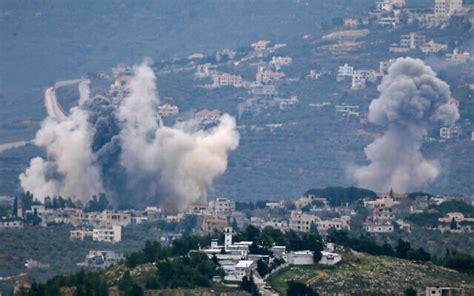
Hezbollah fires rocket barrages at northern Israel
Hezbollah targeted northern Israel with barrages of rockets as Iran vowed revenge against Israel for the killing of Hamas leader Ismail Haniyeh. Hezbollah also promised to increase attacks after Israel killed Hezbollah senior commander Fuad Shukr in Beirut on July 30.
Hezbollah’s rocket fire began in the evening, aimed at several communities in the western Galilee. The Israel Defense Forces (IDF) said, “following the sirens that sounded at 21:44 in the western Galilee area, numerous projectiles crossed from Lebanon into Israeli territory, some of which were intercepted, and the rest fell in open areas. No injuries were reported.”
The IDF stated it carried out retaliatory strikes against the launcher used in the attack. In addition, the IDF said it used artillery to “remove threats in the areas of Rmaych and Ramyeh in southern Lebanon.”
The rocket fire on the evening of August 1 appeared to be a prelude to a larger Hezbollah attack the Iranian-backed group vowed is forthcoming. The IDF has prepared for various scenarios involving attacks by Iran and its proxies.
Major General Tomer Bar, the head of the Israeli Air Force (IAF), released a statement after the completion of a recent IAF unmanned aerial vehicle (UAV) operator course: “The Israeli Air Force defends and operates in all arenas of the war, enveloping the State of Israel with dozens of aircraft, manned and unmanned, ready and prepared within minutes for any scenario, in any arena.” His comments were directed at the larger threats facing Israel.
Bar said the air force would act against any threat and claimed there was “nowhere that is too far for us to strike.” The IAF carried out a retaliatory strike on the Yemeni port of Hodeidah after the Houthis used a drone to attack Tel Aviv on July 19. The operation, using F-15s, F-35s, and refueling aircraft, was an example of the kind of complex operation Israel could use in other scenarios.
Another type of operation carried out by the IAF was the airstrike on Hamas commander Mohammed Deif in Gaza on July 13. The IDF concluded that Deif was killed in the strike more than two weeks after it was carried out. “Following precise IDF and ISA intelligence, IAF fighter jets conducted a precise, targeted strike on a compound in which Mohammed Deif and Rafa’a Salameh, the Commander of Hamas’ Khan Yunis Brigade, were located,” the IDF noted on July 13.
On the Gaza front, Israel continued small operations against Hamas. In Khan Younis, Israeli forces carried out an airstrike on launchers used by the group. In Tel al-Sultan, near Rafah, the IDF also said it “dismantled a structure rigged with explosives that was used by Hamas terrorists.” Hamas continues to say that it is targeting Israeli forces in southern Gaza, claiming in recent days to carry out attacks on armored vehicles. Elsewhere in Gaza, much of the fighting appears to have reduced to a relatively low-intensity conflict.
The IDF said one of the IAF’s airstrikes struck the Dalal School in Shejaiya in northern Gaza. Israel accused terrorists of using the compound as a hideout for commanders and operatives. In another airstrike, Israeli forces killed Ismail al-Ghoul, who Al Jazeera said was one of its journalists.
“In a joint IDF and ISA [Israel Security Agency] operation, the IAF struck and eliminated Ismail al-Ghoul, a Hamas Military Wing operative and Nukhba terrorist who participated in the October 7th Massacre and was responsible for the recording and publication of attacks against IDF troops,” the IDF said. Israel is often accused of improperly targeting civilian personnel and structures, such as schools and journalists, but the IDF states that Ghoul and the Dalal School were legitimate targets linked to terrorism.
Source » longwarjournal.org





